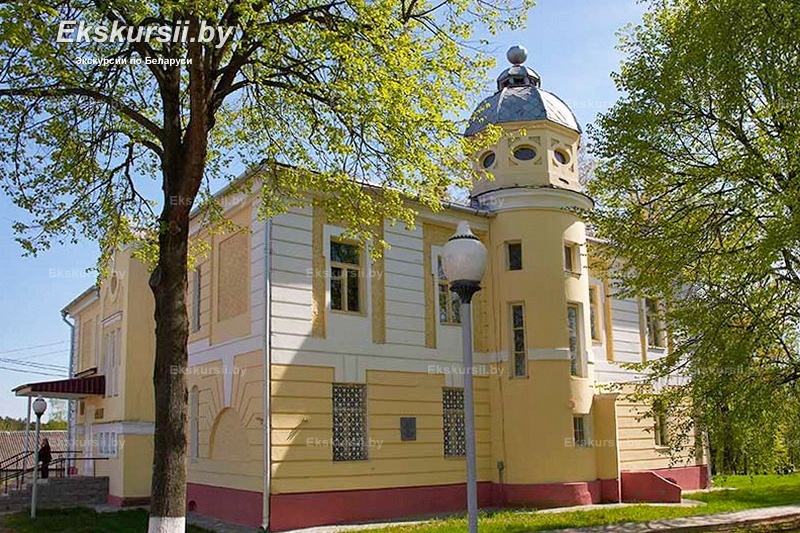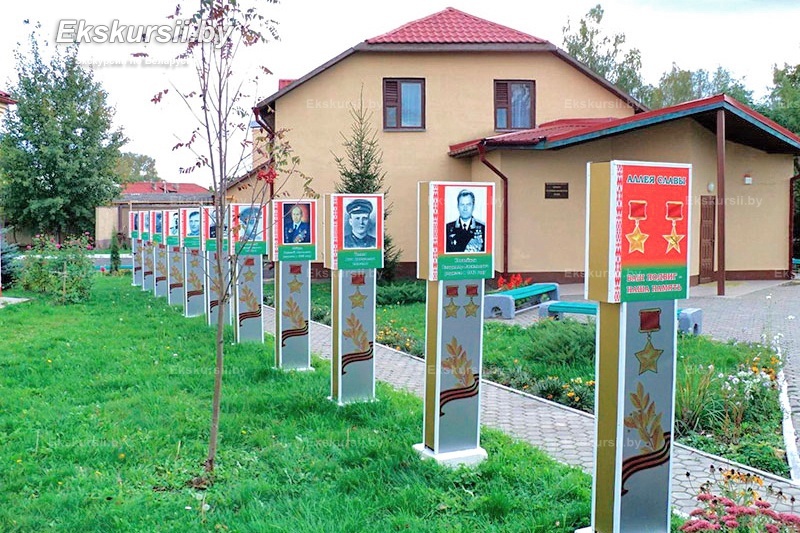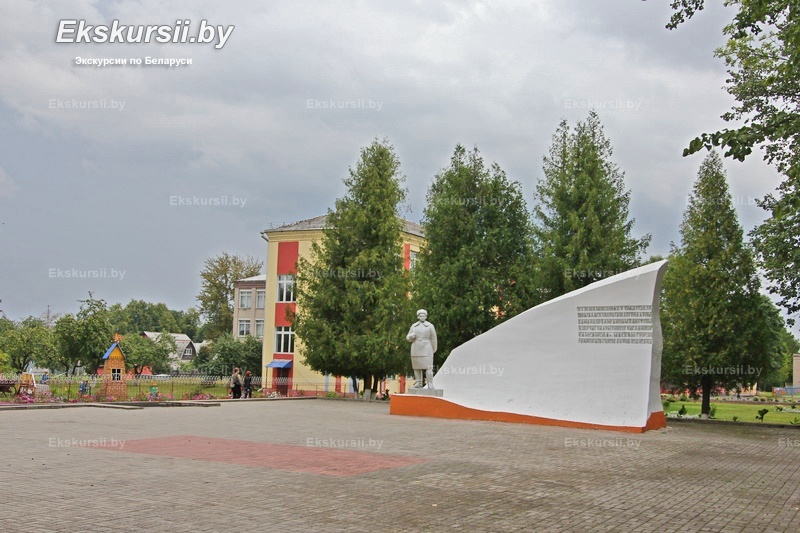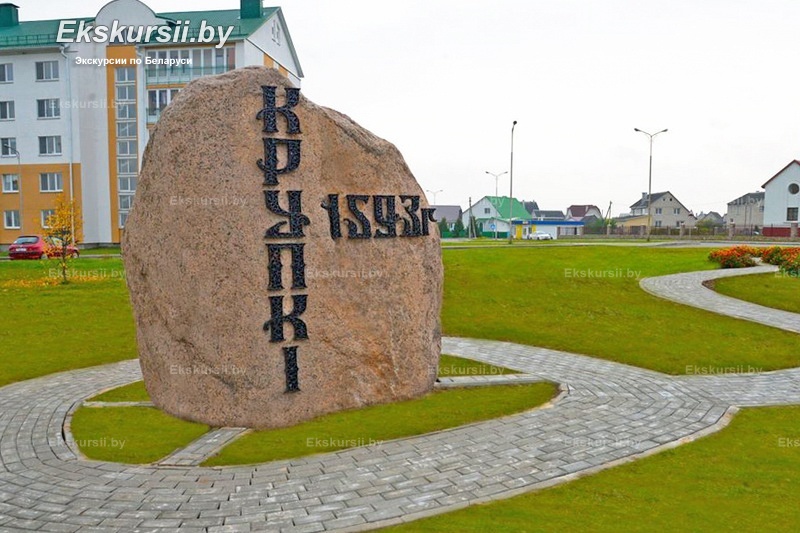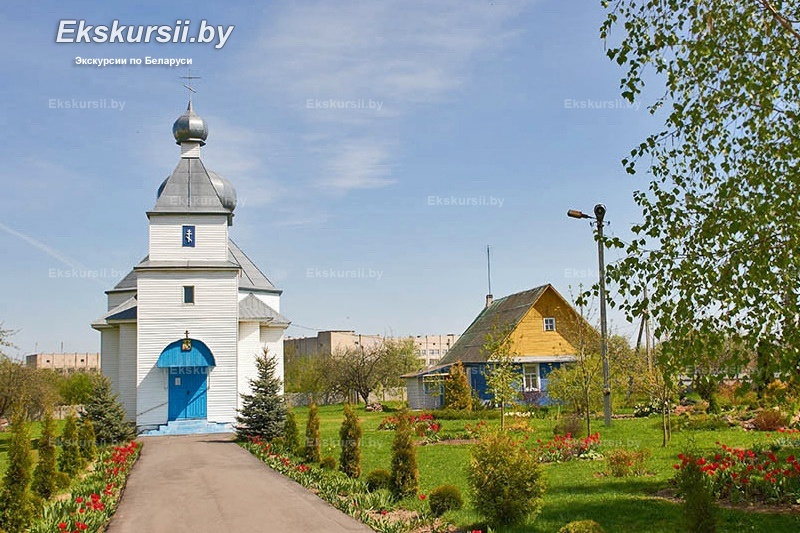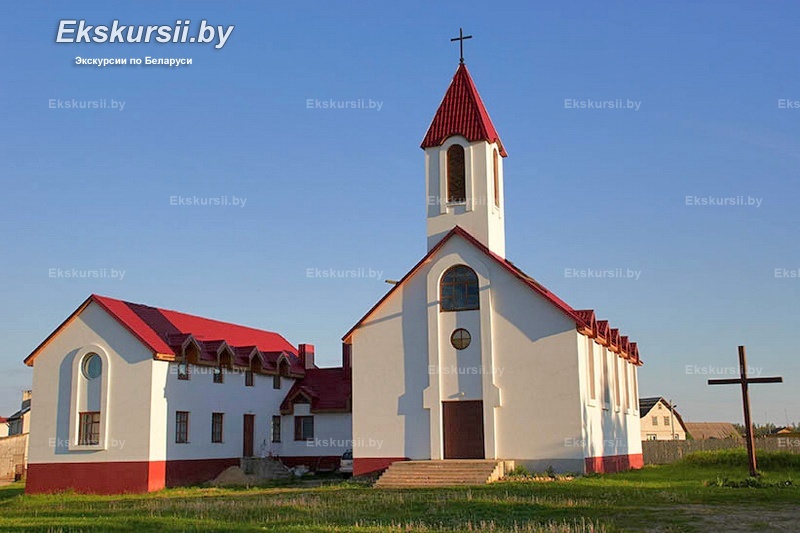History of the development
Krupka settlement was firstly mentioned on February 25, 1593 and already appeared on the map of the Grand Duchy of Lithuania in 1613, which was published in Amsterdam by cartographer T. Makovsky commissioned by Nikolai Radzivil. In 1627, Prince Sangushko Symon Samuel presented Krupki with 60 houses to his wife Elena Korvin-Gasevskaya.
In 1793, after the second division of the Polish-Lithuanian Commonwealth, Krupki became the part of Bobr volost of Mogilyov gubernia of the Russian Empire. The famous Ekaterininsky highway or the old Smolensk road passed here, which was used by many prominent political figures and travelers on their way from to Moscow.
During the war with Napoleon in 1812 Krupki was burned down by French soldiers. One of the legends says that Napoleon’s coach with numerous riches drowned in Lake Stacheye (Lesnoye).
Industry began to develop in Krupki since the middle of the XIX century - a flour-milling manufactory, a match straw factory, a tannery, and a creamery; a railroad appeared.
Council of Workers 'and Peasants' Deputies was established in Krupki in 1917. For 4 years Krupki was part of the RSFSR, the border of Belarus passed through the territory of Krupsky district. July 17, 1924 Krupki became the center of Krupsky district, by the end of the 30th there were 37 industrial enterprises in Krupsky district. February 20, 1938 Krupki became part of Minsk region, and on September 27 it was given the status of urban settlement.
In 1941 the territory of Krupsky district was occupied by the fascist invaders, where a district government was created to manage the economy.There was a Gestapo, a school for training Gestapo agents and two prisons here. Just two kilometers from Krupki there was a concentration camp. During the war more than two thousand people were killed here. In 1942, a serious partisan movement started - about 6,000 partisans participated. Krupsky district was completely liberated from in 3 days during Bagration Operation. Immediately after the liberation, the restoration of the national economy and the infrastructure of the region began.
In 1991 Krupki received city status, and in 1999 - the own coat of arms.
Tourism potential
Krupsky district has a huge natural potential for ecological tourism, because there is one of the most beautiful nature reserves in Belarus her - reserve «Selyava» with a clear lake and many other amazing landscapes. But Krupsky district is rich not only with natural resources, there are about 15 objects of archeology and history, which are included in the State List of Historical and Cultural Values in the Republic of Belarus.
The Svyatski's Manor House is the main sight in Krupki. Karl Svyatsky built a manor in «modern» style and park in the center of the village at the beginning of the XX century. The two-story palace with a tower was also the center of cultural life in Krupki, as art masterpieces were shown here and even theatrical performances were organized. The manor house and part of a park have survived to nowadays.
There is a monument to V.V. Kovalenok – the famous space pilot, Hero of the Soviet Union, who was born on the territory of Krupsky district. A museum in his honor with family photographs, documents and awards of the Belarusian cosmonaut was created on the basis of Hotuhovsky secondary school in Krupsky district. Exposition in the Krupki District Local History Museum is devoted to him. The museum shows visitors archaeological finds on the territory of Krupsky district, its nature, ethnography and modern history.
Krupki cannot surprise guests with ancient temples, but here you can see modern religious objects - Church of St. Nicholas and St. Joseph's Cathedral, which were built in the late XX - early XXI.
Krupki is a comfortable city for travelers, where you can go driving along the M1 Moscow-Minsk highway. The history and the outstanding people of Krupki has a particular importance here. You can walk along the park, feel pride for the courageous defenders of the Motherland and the first Belarusian astronauts, get acquainted with the folk craftsman of weaving or just relax on the shore of the beautiful Selyava.
